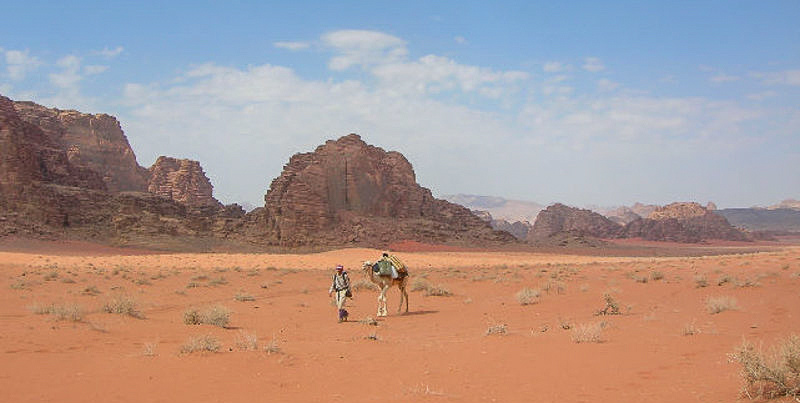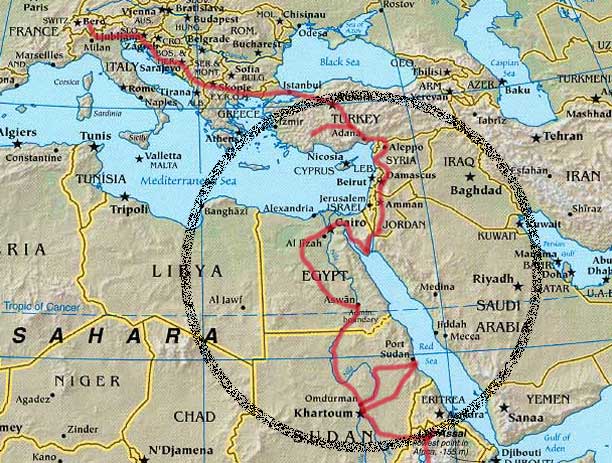
BORN TO BE WILD PROJECTS

Deeply in love with nature and driven by passion and curiosity
The projects of Roberto Schraner are mainly about wild nature and travelling on foot. One of his goal is to share this crucial experience of nomad being and to inspire others to do so. See some pictures of his "born to be wild projects":
After six years running a horse farm,
he moved on and build a new base camp in a remote and wild area of the Swiss Alps. The Tamina valley is located far away from busy everyday life and traffic. The village sits 940 meters above sea level, at the foot of the Calanda mountains. Further south the valley opens towards the Kunkels pass and the Graubünden mountains. It's a very beautiful area to explore all the mountains and valleys around.
More about his Swiss Alps Basecamp and the flat "Gateway to Nature" for rent videoclip and some airbnb reviews.
This still unspoiled region in Switzerland was also chosen by wolves.
A very good omen. After more than 100 years of being extinct in Switzerland wolves have returned to the eastern part of the country. Roberto Schraner supports the public debates and discussions whose purpose is to protect wolves.
Quotes about the wolves debate:
“If you think about it, the whole area of the Alps is former wolf territory. It is a fact that they lived here long before we did. Their return would be an important contribution to enriching Switzerland's biodiversity.” Joanna Schoenenberger, WWF-Switzerland
“Wolves are the antithesis of civilization. They represent the wilderness we have lost.” Doug Smith, head of the wolf program at Yellowstone National Park
“People are tired of urban life. The wolf represents a return to natural life. It’s attractive, and at the same time it’s a little bit frightening.” Marie-Odile Guth, Director of Nature Conservation, France
Further reading and source: The Economist, Dec 22nd 2012 The wolf returns - Call of the wild
Expedition Kaokoland Namibia Homeland of the Himba Nomads
Camel Trekking Expedition in southern Africa. Total distance traveled on foot 550 kilometers. Route: Okongwati, Van Zyls Pass, Marienfluss Ebene, Orupembe, Purros, Okandjombo, Ongongo and Opuwo.
First camels to cross the steep Van Zyl's pass. Blitz and Tango are the only two camels in Kaokoland. They were trained and introduced by the Swiss Roberto Schraner specifically for trekking expeditions. For most Himbas these are the first camels they have ever seen. This fact made the encounter with the expedition very exciting.
P.S. Don't miss "Back to the Civilization" at the end of the video -- modern Himba Tribe Bar.

In the footsteps of oriental explorer J.L. Burckhardt
The Swiss Johann Ludwig Burckhardt was a brilliant explorer. He discovered in 1812 Petra, the capital of the nomadic people of the Nabataeans. His extensive travel reports have impressed Roberto Schraner. Based on these reports, he was able to reconstruct the itinerary. Burckhardt became his "travel guide". For months he followed in the footsteps of Burckhardt, with the help of Russian military topographic maps.
In his image-rich report "Nomade auf Zeit" Roberto Schraner compares the discoveries and descriptions of J.L. Burckhardt with his observations.
He procured a camel, so he can follow Burckhardt through the desert of Jordan. The discoveries gave an interesting insights into what is Jordan in these days.
Further Schraner follows J. L. Burckhardt alias Sheikh Ibrahim, along the discovered temple Abu Simbel in southern Egypt, then 1’000 KM through the desert of eastern Sudan to Suakin at the Red Sea. There surprised him most, how accurate Burckhardt characterized the Beja nomads and 192 years later Schraner was confirmed exactly by the same experiences. Not at all hospitable nomads, what is not common for Arabic nomads.